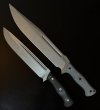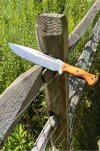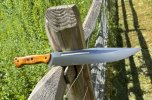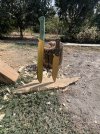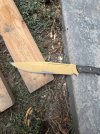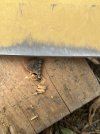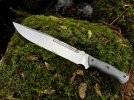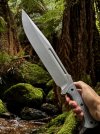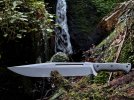Absolutely gorgeous my friend! I wish I could get an edge like that! Loving the battle worn 24K look as well. You're the guy that gets a Ford Raptor and actually takes it off road and uses it like God intended!
Absolutely gorgeous my friend! I wish I could get an edge like that! Loving the battle worn 24K look as well. You're the guy that gets a Ford Raptor and actually takes it off road and uses it like God intended!
I wanted to ask about something

The hardness of your CPM3V and Z-Tuff is rated at 61 HRC.
However, from what I’ve seen in various research, the typical hardness for CPM3V is around 60-60.5 HRC, and for Z-Tuff, it’s usually 61.5-62 HRC.
That said, both of your steels perform amazingly. Just today, I was chopping a 35-40 inch thick tree—grape and ash, both dry and knotty—and I hit the knots hard. The blades held up perfectly.
The steel on the Fell Beast (Z-Tuff) performs just as well. I even bent it harder than you did in your Shorts video, and it springs back to its original shape.
*Yes, this tangent was necessary!*
So, what’s behind these hardness values? Is it based on your own research? I’m curious about the acceptable margin of error in hardness, say, across 10 Tyrant blades with Z-Tuff or CPM3V, or even the Fell Beast.
I’m really interested—did you arrive at these values through testing or research?
From what I’ve read on forums, you, like me, enjoy putting blades to the test in real-world chopping scenarios

.
I’ve seen how many tests—sometimes even failed ones—went into your blades, and you always find a solution.
So, I’m intrigued: if it’s not giving away a trade secret, what led you to choose these hardness levels for the steels, and how did you arrive at them?
(Photo just for a vibe,last days of summer

)



